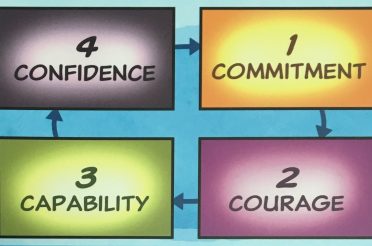 Thankfully there’s a growing number of Coronavirus relief options available for small businesses and their owners, but it’s messy knowing what’s out there, how they work, and which are best for you. Here’s our view of the landscape accompanied by our pointers and resources so you can chart your path forward. (Last updated 4 Jun 2020 09:17 ET)
Thankfully there’s a growing number of Coronavirus relief options available for small businesses and their owners, but it’s messy knowing what’s out there, how they work, and which are best for you. Here’s our view of the landscape accompanied by our pointers and resources so you can chart your path forward. (Last updated 4 Jun 2020 09:17 ET)
What’s Covered Here & How
Just to point out, this is not a full technical explanation of all provisions, but a survey of what’s out there accompanied with enough ‘gist’ so you have a sense of how it works and which are worth pursuing further for you. Also, be sure to see our separate blog post on COVID-19 Tax Relief for Individuals for a summary of provisions available at the personal level.
We should also mention that new benefits are continuing to be created, guidance is continuing to be developed, and clarifications are continually forthcoming — so we’ll continue to take everything in stride.
For reference, here’s the legislation reviewed and synthesized for this post: U.S. CARES Act (Coronavirus Aid, Relief, and Economic Security Act); U.S. Families First Coronavirus Response Act (FF); U.S Paycheck Protection Program & Health Care Enhancement Act (PPPHCE); U.S. Paycheck Protection Program Flexibility Act (PPPFA); (Additional U.S. legislation could be forthcoming)
Small Business Coronavirus Relief – Federal
Let’s look first at Coronavirus relief for small businesses being made available at the federal level: (Note: You may also want to watch our video on the 4 main provisions and how to choose between them.)
- Forgivable Paycheck Protection Program Loans — Essentially a loan for 2.5x your average monthly payroll costs over the last year (capped at $10m), which can be forgiven tax-free if the money is used for payroll, mortgage, rent, and certain utilities within 8-weeks of being issued (24-week option under PPPFA). The amount of forgiveness will decrease if the workforce is reduced, employee wages fell more than 25%, and/or inadequate amounts were directed to payroll (see our dedicated PPP blog post for details, tripwires, and safe harbors). Some general pointers: (a) These loans are only available through June 30, 2020, and (b) Any un-forgiven amounts are to be repaid within 2 years at 1% interest rate (5-year option under PPPFA). (CARES) // Forms and information on dedicated Department of Treasury page including critical clarification on calculation of ‘payroll costs’ and clarification for self-employed/contractors; Additional information on SBA website plus a good guide from U.S. Chamber of Commerce; Loans are obtained through approved lenders (like your existing banking relationship), newly on-ramped fintech companies, banks serving non-customers, or use SBA eligible lender lookup. Banks brought systems live between April 3-10, and the original $350b was extended by an additional $320b through the PPPHCE signed into law on April 24.
- Expanded Economic Injury Disaster Loans (7(b)(2) loans) — Intended for other than payroll costs, EIDL’s can be for up to $2m with an immediate (within 3-day) $10,000 advance (now being quoted as $1,000/employee up to $10,000) which doesn’t have to be repaid even if the loan application is later denied, an interest rate of 3.75% with no payments for a year, and no personal guarantee is required for amounts under $200,000 if issued before December 31, 2020. (CARES) // Good overview from U.S. Chamber of Commerce and application details from our payroll partner Gusto. The original EIDL allotment was extended by $60b through the PPPHCE signed into law April 24. Apply here on the SBA website.
- Subsidy for other SBA loans — Regular 7(a) loans from the SBA (i.e., other than Paycheck Protection Program) are eligible to have the government pay six months of principal, interest, and fees. (CARES) // More information here on SBA website.
- Delay of employer’s share of Social Security payroll tax — All employer matching of Social Security taxes on employee wages through December 31, 2020 (6.2%) can be deferred, with half being due no later than December 31, 2021 and the other half due no later than December 31, 2022. This can similarly be applied for those who pay self-employment tax — 50% of self-employment tax through the end of 2020 can be deferred and repaid half at the end of each of the next two years. Some pointers: (a) This deferral can be combined with the CARES payroll tax credit, but (b) This deferral was originally not eligible for those receiving PPP loans, but was later permitted under PPPFA. (CARES; PPPFA) // This will be accomplished by your payroll processor (see our payroll partner Gusto’s demo) but they will need you to indicate you want to avail of this relief option.
- Business losses for 2018 to 2020 can be carried back to claim refunds — The 2018 tax law discontinued a provision that allowed businesses to carry back any current year loss to a previous years in order to claim a refund of taxes paid during those ‘profit’ years. Now the ‘net operating loss’ (NOL) provision has been resurrected and losses during from 2018 to 2020 can be carried back five years to claim a tax refund. There’s also additional technical provisions lifting other limitations that could hamper the ability to fully apply the loss. (CARES) // Since most IRS offices are closed and mail is piling up, tThere’s a special fax number these requests need to be sent to — Let our team know if you’d like to invoke this relief.
- Payroll tax credit for retaining employees — Employers with less than 100 employees are eligible for up to a $5,000 refundable payroll tax credit per employee (50% of wages and health benefits up to $10,000) if your operations were fully or partially suspended due to a COVID-19 shutdown order, or gross receipts dropped by more than 50% compared to the same quarter last year. Some pointers: (a) The same wages cannot also be used in the calculation of the family medical/sick leave payroll tax credit for under the Families First Act, and (b) An employer will be disqualified from claiming this credit if they take out a SBA Payroll Protection loan. (CARES) // Good guide from U.S. Chamber of Commerce and blog post from Gusto. This will be accomplished by your payroll processor, but they will likely need information from you to accomplish.
- Payroll tax credit for required paid sick leave — Employers who pay qualified sick leave wages (including allocable portion of qualified health expenses) can receive a 100% credit for the amounts paid against their employer Social Security payroll taxes. A version of this also applies to self-employed persons as a credit against their self-employment tax, with a special formula to determine ‘sick leave wage’ equivalent. The credits top out between $2,000 to $5,110 depending on the particular COVID-19 scenario (diagnosed, carrying for other, similar symptoms, etc.). (FF) // This will be accounted for by your payroll processor, but they will likely need information from you to accomplish. Here’s a good rundown of this credit by our payroll partner Gusto.
- Payroll tax credit for required paid family leave — A credit similar in nature to that for required paid sick leave, but which relates to paid family leave and caps out at $10,000. Similarly, a version exists for self-employed individuals. (FF) // This will be accounted for by your payroll processor, but they will likely need information from you to accomplish. Here’s a good rundown of this credit by our payroll partner Gusto.
Small Business Coronavirus Relief – State
In addition to relief for small businesses from the federal governments, many states are responding with relief as well. We can’t cover every state here, but below are resources we’re aware of:
- Maryland — Small Business COVID-19 Emergency Relief Grant Fund ($10,000 grants); Small Business COVID-19 Emergency Relief Loan Fund ($75m available at no and low interest); COVID-19 Emergency Relief Manufacturing Fund ($5m for those making personal protective equipment). // Details available on the Maryland Coronavirus/COVID-19 Information for Business page.
- District of Columbia — DC Small Business Micro-Grants ($25 available, but applications close March 31). // Details available on the DC Recovery for Business page.
- Virginia — Virginia’s Support for Businesses page.
- Gusto compilation of state relief resources — The team at Gusto payroll is maintaining a list of small business relief resources in a Google Doc that’s being continually updated.
Coronavirus Relief Related to Unemployment Benefits
Small businesses employee roughly half of the nation’s workforce, so here’s a breakdown on how unemployment works under the new scenarios:
- Expanded eligibility for unemployment benefits — Typically self-employed, independent contractors, and those with limited work history don’t qualify for unemployment benefits. A Pandemic Unemployment Assistance program is now established through December 31, 2020 to provide benefits for these categories of workers are unable to work as a direct result of the Coronavirus public health emergency. (CARES) // Apply here for MD unemployment benefits.
- Increased amount unemployment benefits — Typically unemployment benefits are a minimal amount as determined by your state. That amount is now $600 more per week for up to four months. (CARES)
- Lengthened unemployment benefits periods — Whenever your state’s normal unemployment benefits would typically expire, that date will now be extended up to an additional 13 weeks through December 31, 2020. (CARES)
- ‘Short-time compensation’ eligibility for unemployment benefits — Depending on the state, employees who work reduced hours (‘short-time compensation’) may now be eligible for unemployment benefits. Now thru December 31, 2020, the federal government will fund 100% for these cases in states which do, and 50% for those states which start to. (CARES)
Possible Game Plan for Entrepreneurs
As you can see, there’s a lot to digest. Next steps that may make sense for a lot of small business:
- Run cash projection scenarios.
- Evaluate business & profit model adaptations.
- Contact your bank to apply for a Paycheck Protection Program loan and use the monies towards to keep your employees and self paid. (Remember to use 75%+ towards payroll and meet other provisions so you can later qualify to have the loan forgiven. Strong business records will enable proving monies were spent as intended, and setting up a separate bank account for PPP money may be a good idea. Here’s our tips on tech-enabled business finances.)
- Evaluate whether you should file your 2019 tax return before the recovery rebate checks are issued or not. (More information in our post Hidden April 15 – July 15 Tax Deadline Implications.)
- Contact us take advantage of the loosened business loss rules to get refunds on 2018 to 2020 tax returns.
- Be sure you properly log sick or family leave wages due to COVID-19 with your payroll processor so you can claim the available payroll credits. (Remember you can’t double-dip with both Paycheck Protection Program/Employee Retention Credit for the same wages.)
- Delay paying Social Security payroll tax with your payroll processor if you need the extra cash now.
- Evaluate additional SBA loans or retirement fund withdrawals very skeptically — loans have to be paid back from future profits, and retirement is still coming.
Build a Bridge
There is undoubtedly more to come — we encourage you to subscribe to our Insights Blog if you’d like to receive a note as we release our analysis, and of course check back here as details and additional guidance is issued.
These are rocky times for many businesses, and it’s critical to keep one eye to the horizon and one eye to the present in order to build a bridge to the future.







